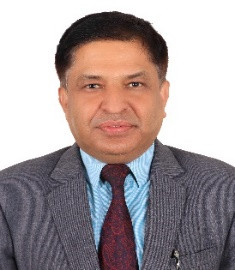
Despite having enormous hydro potential, Nepal's net hydropower development so far is less than 2,500 MW. During the dry season, it even goes well below 1,000 MW. Due to difficult geography, high transmission and distribution costs, and low capacity utilization of power, the Nepal Electricity Authority (NEA) is still struggling to extend the national grid in remote areas, it seems it will take a few more years to reach everyone if it is left only to the initiative of the government. These remote areas though have loads of their problems but many of the high hilly areas offer very attractive world-famous trekking and mountain climbing routes.
As around 1,000 trekkers and climbers pour in every year, these trekking routes create opportunities for the locals to have good sources of income. In fact, it also has a noticeable contribution to the gross domestic product. Nepal's trekking routes are renowned all over the world for their pristine beauty, unique culture, and breathtaking views. Trekking enthusiasts flock to these areas to experience the magnificence of the towering mountains and the serenity of the natural surroundings. However, with an increasing number of visitors to these areas, the demand for modern amenities has also increased, which has imposed a strain on the limited resources of the region. One of the most significant challenges faced by the communities in these areas is the lack of reliable access to electricity. But, with the use of distributed renewable energy technologies, this challenge is being addressed, by the availability of clean lights and the promotion of small businesses in the tourism sector.

During a recent trekking expedition to the Annapurna Base Camp (ABC) and Langtang Valley, the author as an expert in renewable energy, observed the use and the impact of modern energy access in the areas. In the past, communities in these areas relied heavily on forest resources for fuelwood. However, with the conservation efforts and the increasing awareness of environmental issues, the use of fuelwood has been restricted beyond the need. The author could see a lot of fallen and old trees that were rotting but could not be used for fuelwood. Instead, the primary source of fuel for cooking was Liquefied Petroleum Gas (LPG), which needs to be carried by human porters and mountain donkeys.
Photos of Chhomrong and Banboo villages on the trek to ABCMHP

For lighting, the communities in these areas have adopted micro hydropower plants (MHP) as their primary source of electricity. These MHPs are small-scale hydroelectric power systems that generate electricity from the water flowing through a small stream or river. These systems are proven technology reliable, sustainable, and have very low environmental impacts. After crossing Chhomrong village, all other villages, teashops, or lodges that are in the ABC trek routes, are having MH projects to provide locals access to electricity right up to Machhapuchchhre Base Camp, while the Annapurna Base Camp is fully dependent on solar photovoltaic electricity.
Similarly, in the Langtang Valley trek that starts from Bamboo onward, all the places up to the Kyanjin Gompa are electrified by MHPs . In Kyanjin Gompa, a 100kW MHP, supported by Kadoorie Agricultural Aid Association, British Gurkhas Pokhara, Nepal, is an exquisitely constructed and well-operated MHP. The plant is designed and constructed in such a way that the whole penstock route is insulated, while it draws water from the bottom of the glacier lake to prevent water from being frozen during the winter season. This project supplies electricity to the new Langtang village which is formed after the 2015 earthquake. The original Langtang village was destroyed by the devastating tremor which took the life of 176 people in this village and swept an operating MHP. The most important aspect of this MHP is that it is using the water from the Langtang Lirung Glacier Lake, hence ensuring the project with dual merits-lowering the glacier lake and using its water to produce electricity.
Photos of 100kW Kyanjin MHP in Kyanjin Gompa, which uses the water of Langtang Lirung Glacier Lake
In the trekking routes besides the MHPs, households invariably keep solar home lighting systems as a backup or complement, depending on the reliability and capacity of the MHPs. The author noted that the use of these renewable energy technologies has brought significant changes in the living condition of the community people along with increasing access to education and information, and businesses. It is a very important case that demonstrates the very positive impact of climate-friendly technologies on renewable energy, which changes the life of the people residing there. It has also eased the life of the trekkers by providing access to electricity which supports systems like charging their phones, laptops, and headlamps for emergency lights during night activities and walks.
Photos of Solar and Wind technologies installed in Langtang Valley Trekking Route
The use of renewable energy technologies has brought clean lights to the communities, making it easier for them to go about their daily activities even after the sunsets. Having access to electricity, the communities can now use mobile phones to communicate and coordinate lodge booking and buy supplies to run their small businesses, such as teashops, lodges, and other tourism-related enterprises, more efficiently. This has led to an improved quality of services offered to trekkers, which in turn, has resulted in increased and satisfied customers to local businesses.
The promotion of small businesses like bakery shops, and coffee shops with modern coffee machines that operate in the trekking routes has had a positive impact on the local economy. The increase in tourism-related enterprises has created employment opportunities for the local people, and this has also helped boost the local economy. The author noted that the use of renewable energy technologies has helped to reduce the dependency of these communities on traditional sources of income, such as agriculture and livestock farming including sheep and yak rearing.
With the growth of small businesses, the communities have diversified their businesses and are less vulnerable to fluctuations in the agricultural and livestock markets. Furthermore, the use of renewable energy technologies has had a positive impact on the environment. The reduction in the use of fuelwood has helped reduce carbon dioxide and black carbon emissions to the environment. The conservation of forest resources has helped to reduce the carbon footprint of the communities and businesses that present-day trekkers like to have or contribute to. The author noted that the use of renewable energy technologies has been a win-win situation for the communities, the environment as well as the trekkers. It also demonstrates a very sustainable management model of renewable technology as it adds value and creates extra income generation opportunities from electricity. Having an extra income out of the electricity use, the beneficiaries pay the tariff of the consumed electricity willingly which further helps in the timely maintenance of the MHP and RE technologies.
Even though Kyanjin Gompa MHP was running only up to 40 percent plant factor, as per the operator of the plant, the small hotels and lodges still consume electricity for limited uses, especially for lighting loads due to poor knowledge about the cost-benefits ratio of using more electricity. There could be two obvious reasons for it-- first as users are price sensitive, they think other fuels like LPG and even fuel wood are cheaper while they are very expensive there, and second, it has always been a myth that if one runs MHP for the full load, it will shorten the plant life. This is partly true as the extra revenue earned by selling electricity could have an option to regularly repair some of the moving parts like bearings or belts, which are directly impacted by higher load and longer running hours of the MHP. These issues however are not limited to only these two trekking routes, the author experienced the same story in Everest trekking route and upper Dolpa areas. In the capacity of the executive director of AEPC, the author had taken some initiative to electrify these areas by implementing two mini-hydro projects in support of the World Bank. One is Majho Khola mini hydro project (942 kW) which will provide electricity access to 582 households and another project is the Amadablam Mini hydro project (911 kW) which will provide electricity to 444 households in Pasang Lhamu Rural Municipality of Solukhumbu district in Mount Everest trekking routes. Similarly, the AEPC has already implemented four solar mini-grid projects in the upper Dolpa area while more than 13 mini-grids are under detailed study and will be implemented with support from the Government of Nepal.
In conclusion, the overall contribution of small distributed renewable energy technologies in rural and remote areas of Nepal has been significant. Despite the challenges of difficult geography, high transmission and distribution costs, and low capacity utilization, these technologies have provided a viable solution to the energy needs of people living in remote areas. Thanks to technological innovation and the falling cost of RE technologies like solar photovoltaics have been a gift to rural poor populations globally. The government initiative to introduce off-grid energy systems beyond the national grid has revolutionized the situation through improved health and living standards and provided new opportunities for economic development in these areas.
Small distributed renewable energy technologies have made a significant contribution in rural and remote areas of Nepal, where traditional sources of energy have been insufficient, unreliable, and harmful to health and the environment. In particular, the use of distributed renewable energy technologies has been a game-changer for the communities and businesses in Nepal's trekking routes. It has attracted more foreign visitors, promoted small businesses in the tourism sector, boosted the local economy, and helped protect the environment. It can be said that distributed renewable energy system is the lifeline for the world-renown trekking routes of Nepal. Kyanjing Gompa MHP shows a very good and innovative way to produce electricity and to protect the outburst of glacier lakes due to an increase in water levels by melting ice resulting from the impact of climate change. Similar practices can be replicated in other glacier lakes like Tsho Rolpa Glacier Lake, Imja Glacier Lake, and others. The Government of Nepal and its related authorities must acknowledge the facts and work toward making the modern energy access system more sustainable and affordable and mitigating risks from the glacier-related impact of climate change in the trekking routes.
Dr. Adhikari is former Managing Director of Alternative energy promotion centre (AEPC), Nepal
This article is taken from Urja Khabar Semi-annual Journal Publish on 16th June, 2023
